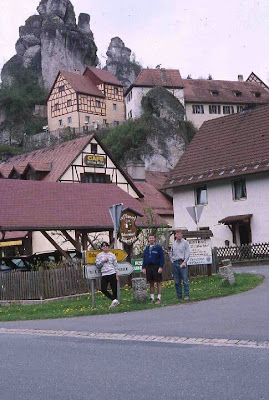
With the holidays in full swing, sandwiched by a couple of long work trips, time has been a little tight. Yesterday, Romney suggested a long ski in the Unitas for today so I combined two A workouts together. Depending upon the time of year this might not be practical. But given that I'm still in my first block of training, where A workouts still aren't as long and involved as they could be, it was pretty easy to strategize.
Warming up for an A workout should be un-hurried and thorough. We began with a family RUKE (run/hike aerobic outing) above our house. With the dogs appeased, I headed off to The Front, leaving Lisa at home to finish 100 burpees.
 ruking is great for base aerobic conditioning. it's also quite social as you're never very out of breath. the goal is to keep moving with your heart rate up, but way below your LT. it's easy to train with others of different fitness levels with mountainous terrain. sometimes you're walking...
ruking is great for base aerobic conditioning. it's also quite social as you're never very out of breath. the goal is to keep moving with your heart rate up, but way below your LT. it's easy to train with others of different fitness levels with mountainous terrain. sometimes you're walking... and sometimes you're jogging.
and sometimes you're jogging.I warmed-up my upper body with about 30 minutes of bouldering. I began lapping some easy problems, then doing harder and harder moves but being careful not to pull too hard or get even remotely pumped, as this would interfere with the power investment that could be devoted to campusing.
My campus workouts still suck but are progressing slightly. I warmed up on the board with a few moves up with each arm, then followed it with two ladders of every other rung, with a one-minute rest in between sets. This was followed two sets of harder ladders or 1,3,5,7,9.
Normally, I'd rest 4 minutes and begin the most intense movements next. However, I'm not ready for super hard moves on the board yet, so I moved on to training-oriented movements that aren't quite at maximal power.
After a 2 minute rest:
I did two sets on each arm of 1-4-1s:
http://usa.moonclimbing.com/index.php?p=gal&gID=58&gImg=179
With a one-minute rest between sets, then rested two-minutes and did:
Two sets on each arm of 1-4-3-4s:
http://usa.moonclimbing.com/index.php?p=gal&gID=58&gImg=176
My climbing A workout was now finished and I moved into the weight area to work on lower body stuff. I generally add some core work to these circuits but I'd done P90X+ Abs/Core Plus the night before, so I could focus on explosive leg movements. I warmed-up by testing each movement with the right amount of weight and/or height.
Once organized, I did three rounds with no rest of 21 reps, followed by 15 reps, followed by 9 reps of the following exercises in this order:
Box jumps
Push-presses
Wall balls
Step-ups
Jumping pull-ups
Videos of these movements can be found here:
http://www.crossfit.com/cf-info/excercise.html#Exer
After a short cool-down, I was done; a short and concise workout providing a lot of bang for the buck.
























